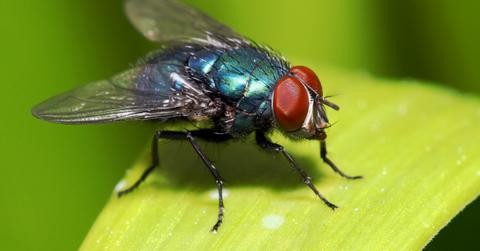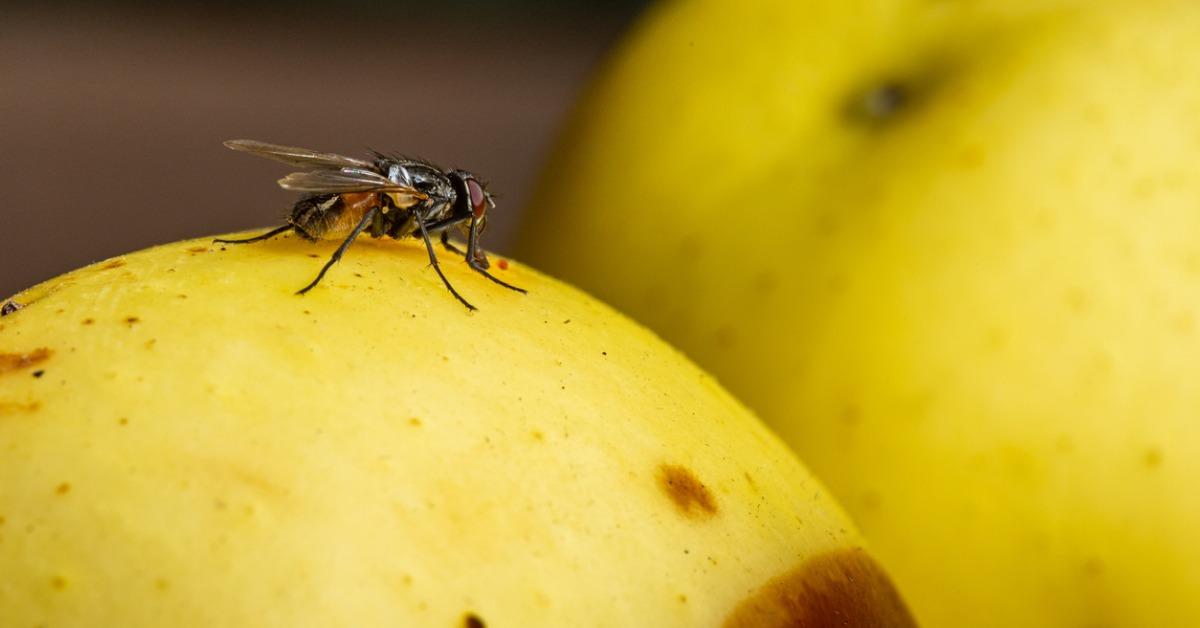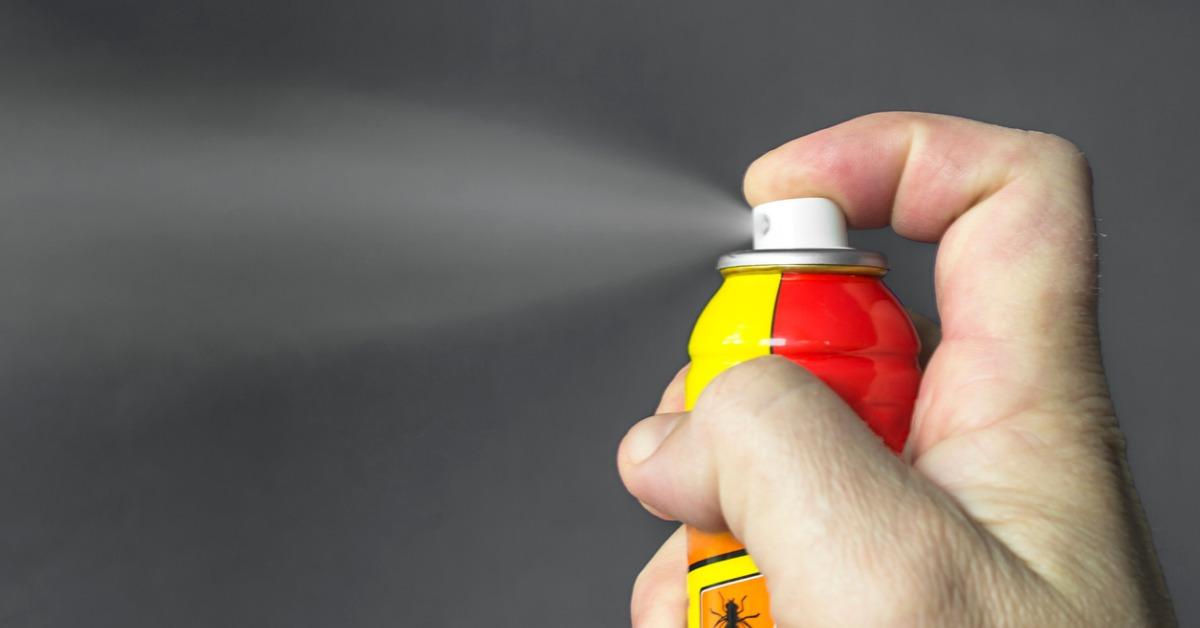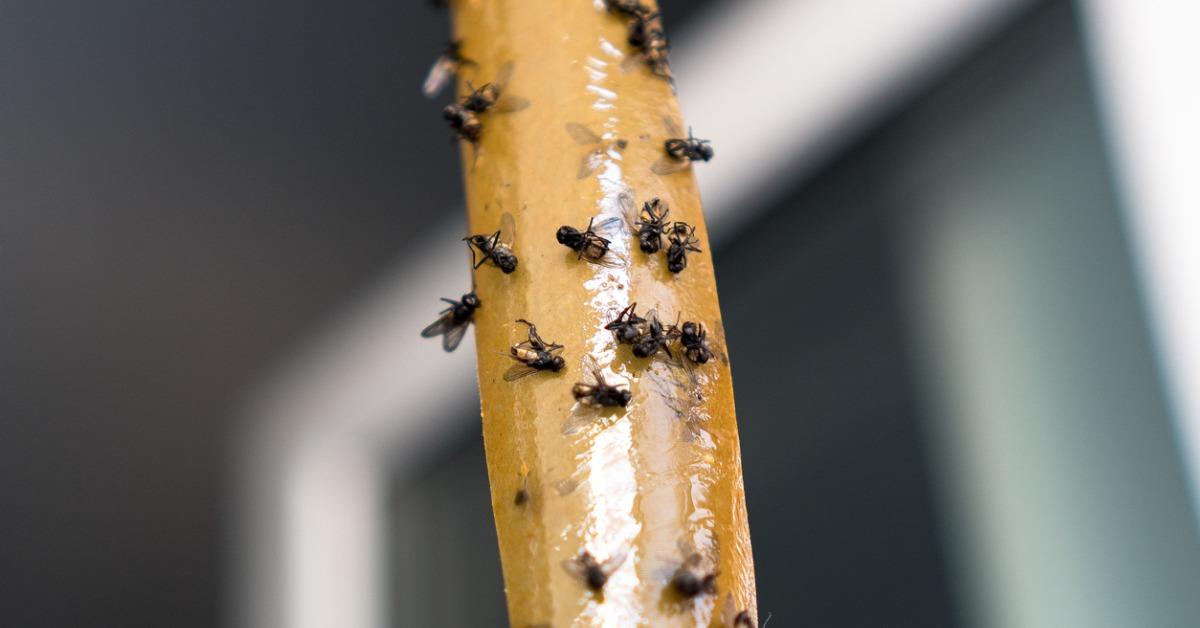Shoo, Fly! These Are the Best Sprays to Keep House Flies Out
Updated Dec. 14 2022, 4:07 p.m. ET

Having flies in your home can be more than just a nuisance; they can indicate that something is amiss. that something can be as easily repaired as a broken window screen, or as serious as a dead squirrel somewhere in the attic. It all depends on the type of flies.
No matter the cause, though, getting rid of them is a feat — that's why we've rounded up a list of the best indoor fly sprays.
There are a number of methods out there to get rid of a fly infestation — the market is saturated with a wide range of traps, baits, tapes, and sprays, but finding the best fly repellent isn’t always easy.
Differentiating the mediocre or highly-toxic ones from the effective or even organic options can involve some research. But the first step is finding out what type of flies you’re dealing with.

What are some common types of indoor flies?
The most common types of bugs that one can find inside their home are house flies, mosquitos, vinegar flies (often mistakenly called fruit flies), and of course, the common gnat. Most of these insects are merely a nuisance, but some such as mosquitoes can cause bodily harm if they're carrying diseases. With all of them, it’s best to root out the source, and get rid of them right away.

What are the best indoor fly sprays?
There are two types of indoor fly sprays: aerosol and non-aerosol sprays. Aerosols, which can sometimes contain toxic ingredients that are bad for the environment, deliver propellants in a steady aerosol spray. Non-aerosol ones are typically a bit greener, but require a more direct application and usually have a trigger mechanism of some sort.
Conventional fly sprays contain synthetic chemicals. Most of these are rigorously tested to determine their toxicity to humans and non-insect organisms. These synthetic sprays are effective, but may also leave harmful residues behind. It’s important to read labels to make sure the spray is safe to be used on clothes, bedding, or other surfaces that may be frequently touched.

Are there any environmentally-friendly indoor fly sprays?
There are quite a few green-friendly indoor fly sprays on the market today and many utilize essential oils as their active ingredients. These oils are usually derived from plants like peppermint and wintergreen, sweet-smelling flora that already possess a potent bug repellent within. All of them are just as effective at killing insects as their synthetic counterparts and they’re much better for the environment because they don’t leave a toxic residue. They’re also better for you and your family.
What are the best organic indoor fly sprays?
According to Insect Cop, the three best organic sprays on the market are Wondercide, Harris Pet Control Spray, and Country Vet Fly Spray. Wondercide Spray is one of the top-rated organic fly sprays on the market. Effective on over 100 bugs, Wondercide is a natural and highly efficient way to get rid of flies. It is non-staining and good for indoor or outdoor use.
Harris Pest Control Spray is another easy-to-use option that offers residual protection without any harsh odors. It may not be the most environmentally-friendly on the list, but it will keep the flies off your surfaces long after the first sprays. Even more effective and long-lasting is Country Vet Fly Spray, which is designed to repel flying insects for up to 30 days at a time. It’s non-toxic, kid and pet friendly, and it kills on contact… bugs that is.
Where is the best place to apply an indoor fly spray?
Almost all indoor fly spray is made to be applied directly to the bugs themselves. But, you can also spray them on windows, doors, screened-in porches, and in any cracks they use to enter, to create a barrier.
You can also spray on countertops in the kitchen and bathroom, or on garbage cans, anywhere that you assume draws the little buggers. If you have an indoor compost bin, spray that as well, as incorrectly built piles will attract flies.

Are indoor fly sprays effective?
Sprays are efficient, but they do come with their own complications. First, many sprays are toxic to pets or children, so finding a non-toxic or even an eco-friendly spray is essential if you have animals or kids in the home.
Second, flies can be widespread, so taking them down with spray means coating all areas of interest, which takes time. Lastly, even the most potent indoor sprays are not a “catch-all solution.” The best way to keep flies out is prevention.
How do I prevent flies in my home to begin with?
The most effective way to get rid of flies is to keep them out in the first place. Seal off all places where you think flies can enter your home. Fix window screens, caulk cracks and crevices, use steel wool in the gaps around pipes or cables, and if there any particularly wide gaps, seal them off with a very fine wire mesh. This will keep other unwanted pests out as well.
Next, eliminate any food sources or potential breeding grounds. Ensure your garbage and compost are covered, and take them out often. Keep the sink empty of dirty dishes and wipe down surfaces often. You can even pour bleach down the drain if you feel the insects are fluttering around your dish drain. Be sure not to overwater plants, as swampy soil can attract gnats. If your backyard has any birdbaths or standing water sources, stagnant water is the perfect place to breed mosquitos.
This article has been updated with new product information.